We return to our mockup series today with a rendition of Codespeller, a potential variation based on QR codes. With work, this might make it into the app someday. We follow up with two more test games of Cyrano, our latest mode to ship. All games will get the faux-cabulary treatment, meaning we’ll annotate them with made-up words and definitions for kicks. The first two games (2nd and 4th screenshots) feature Blu Yonder’s efforts against us facing the same conditions. Blu’s results have the blue top bar.
We settled on a stylized sort of pattern loosely resembling real QR codes, forgoing alignment-type markings and such. As usual for map-type patterns, connecting letters have to share a common edge, and diagonal touches don’t qualify. As such, black spaces never connect with black, and white never connect to white. Looks here can be deceiving, as in the game below when we placed the L next to the C. We thought we could have a word starting with CLI, for example, but the L ended up completely useless. We may make the green connecting lines available.
Assignment: value
The scoring system marks a first for Spell the Beans. In each game, each letter of the alphabet is assigned a random value of 1 to 5 points. This is independent of how common or rare the letter is in everyday use, unlike in some word games. Each letter in a word contributes its assigned value to that word’s total. The changing values each game keep you on your toes, and provide a nice change of pace from the norm.
Word length isn’t used, and there are fewer higher-point letters than lower-point ones. 9 of the letters are worth 1 point each, 7 letters are worth 2, 5 letters worth 3, 3 letters worth 4, and 1 letter worth 5 points. If, as in the game below, E is worth 2 points, all Es in that game are worth 2 points. The listing of point values at the top represents potential value. For instance, Gs would be worth 3 points here, but there are no Gs in this game. This preserves some mystery, but…
The tipoff
The big giveaway in Codespeller is the single 5-point letter, in this case C. It’s a giveaway because exactly one C is guaranteed to be in the game. So you can take advantage by saving a well-connected space for the 5-pointer when it comes up. Everything else besides the 5-pointer is hit or miss, meaning there could be no 4-pointers (though not likely). Finally, to keep scores in line with other modes, the total score at any given time is the total of all words’ letter-value sums divided by four. Division happens after totalling.
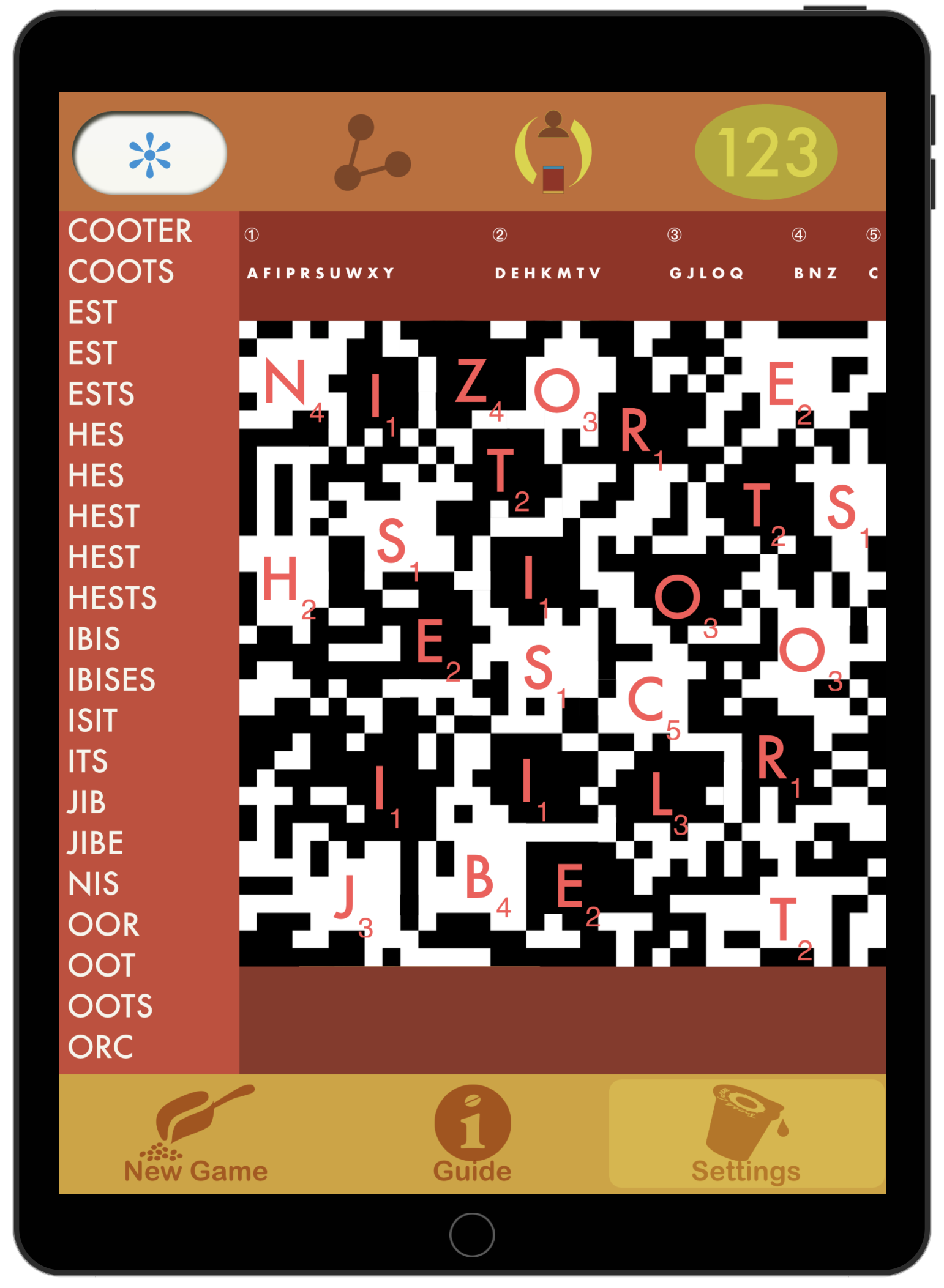
Tickle torture
Zort: The sound of a tickling gun.
Ebistic: Related to sidewalk activity, as an outdoor cafe.
Crozin: A copper decanter.
Nisticot: A Sri Lankan fruit treasured for its complex aroma and taste.
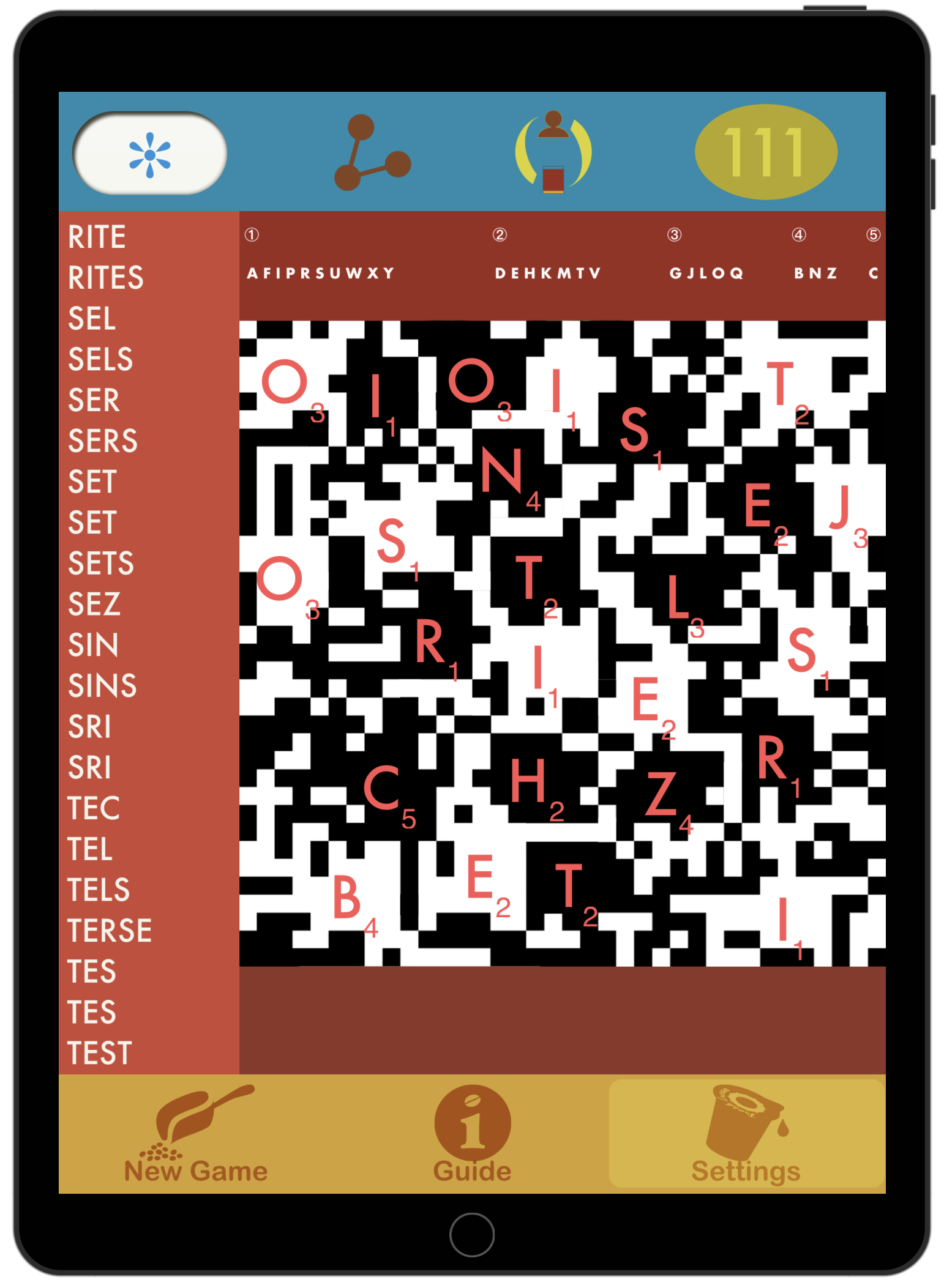
Spooky stuff
Orite: A mineral whose properties change based on proximity to other samples of the same material.
Cetire: In writing, a closing reference to something mentioned at the start, as a theme.
Jesler: A practical joker.
Hitest: A new idea, technology, etc., that catches on virally, finding a wide variety of applications.
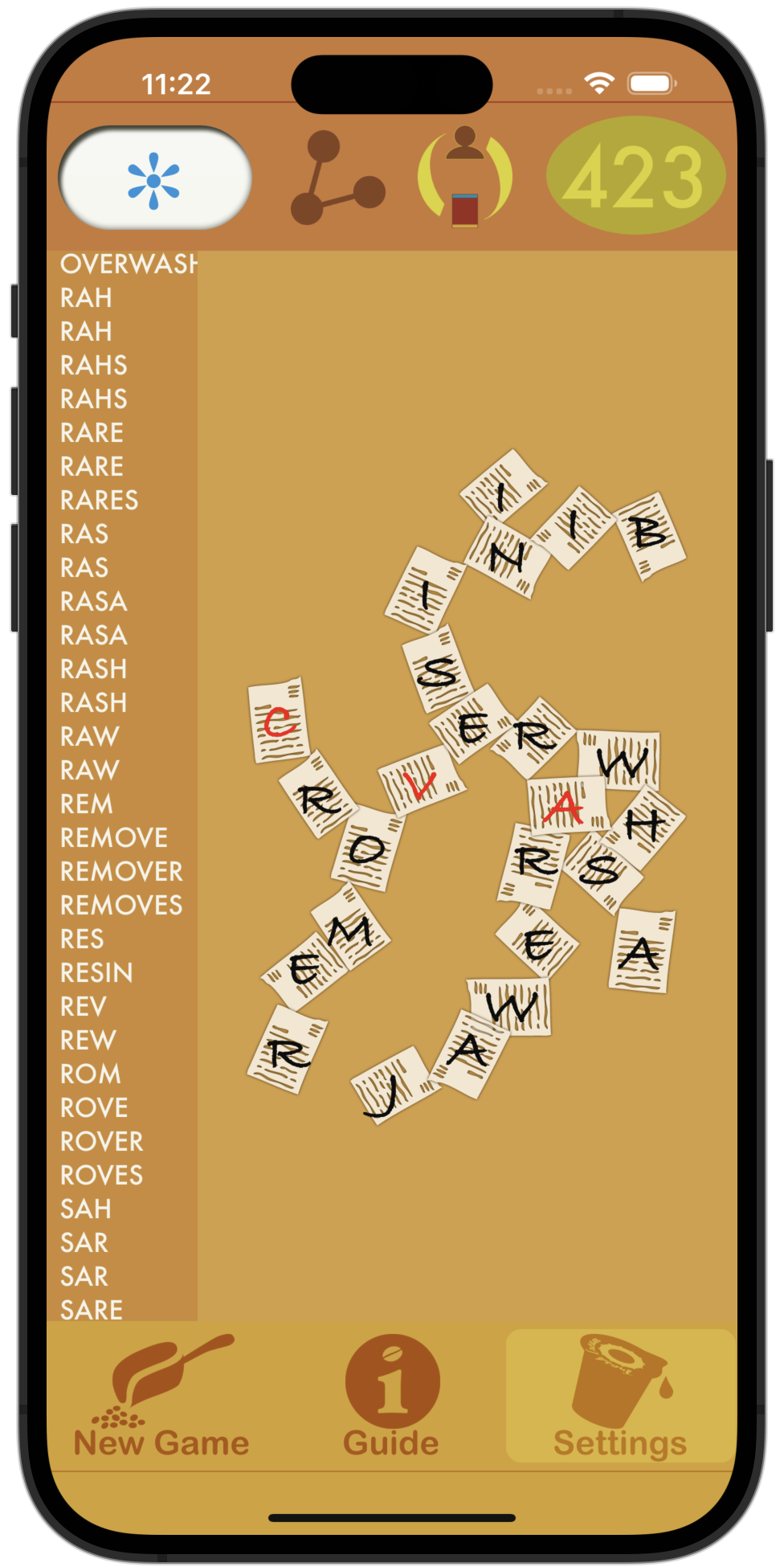
Get your bini on
Sharew: A curlew-like shore bird.
Bini: (Australian) A bandana or kerchief rolled up and tied around the head in hot weather.
Croves: A condition of simultaneous itching and ticklishness, sometimes brought on by a tickling gun.
Vesin: Juice remaining from cutting, cooking, etc..
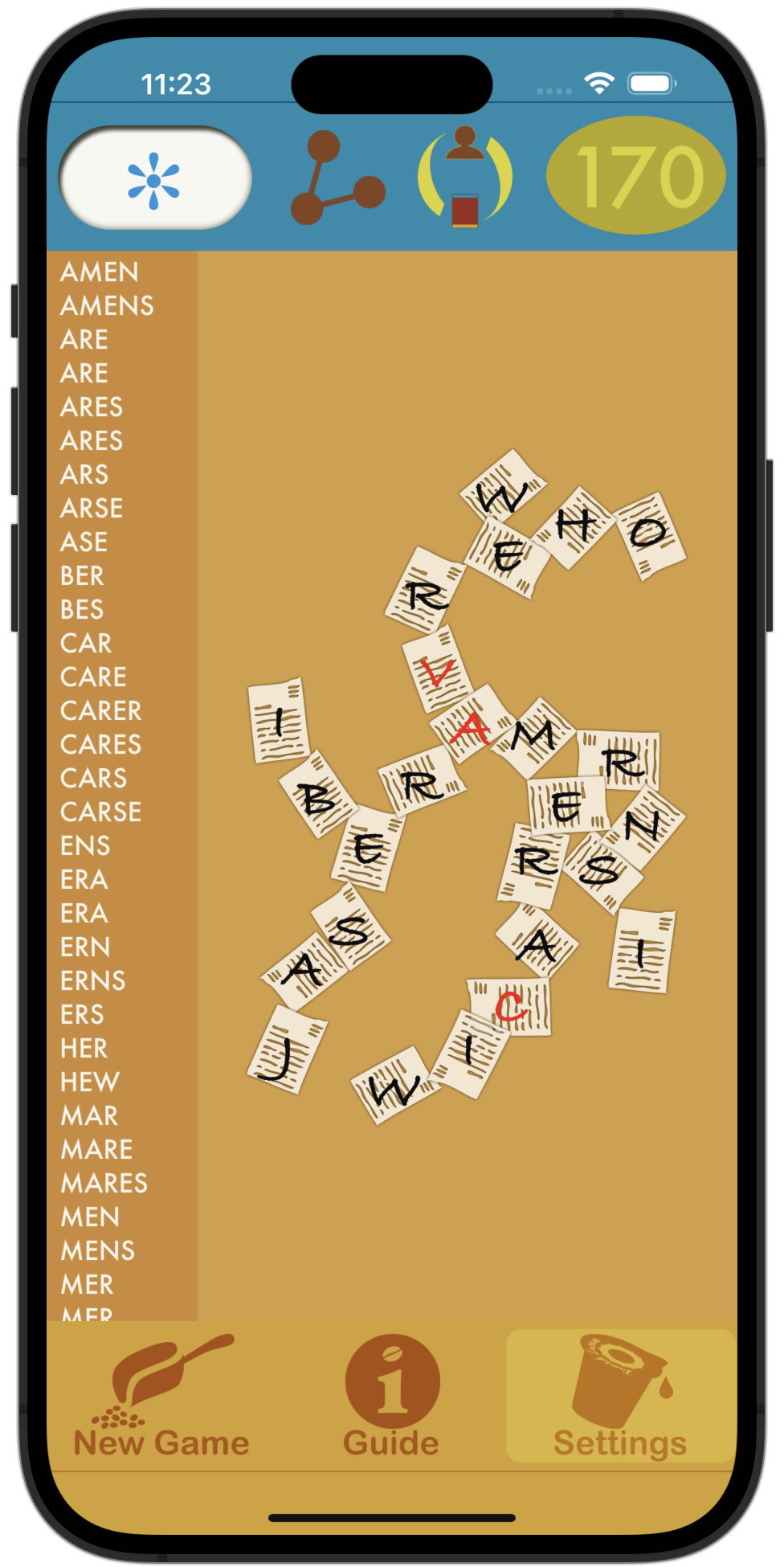
How we got our weho back
Weho: Something motivating or giving strength to a group, like spinach to Popeye but for the many; Group grist.
Berame: To berate and blame.
Wicar: A tar-like binding material used in making thatched roofs.
Mavre: A no-nonsense woman not afraid to take charge and buck the tide.
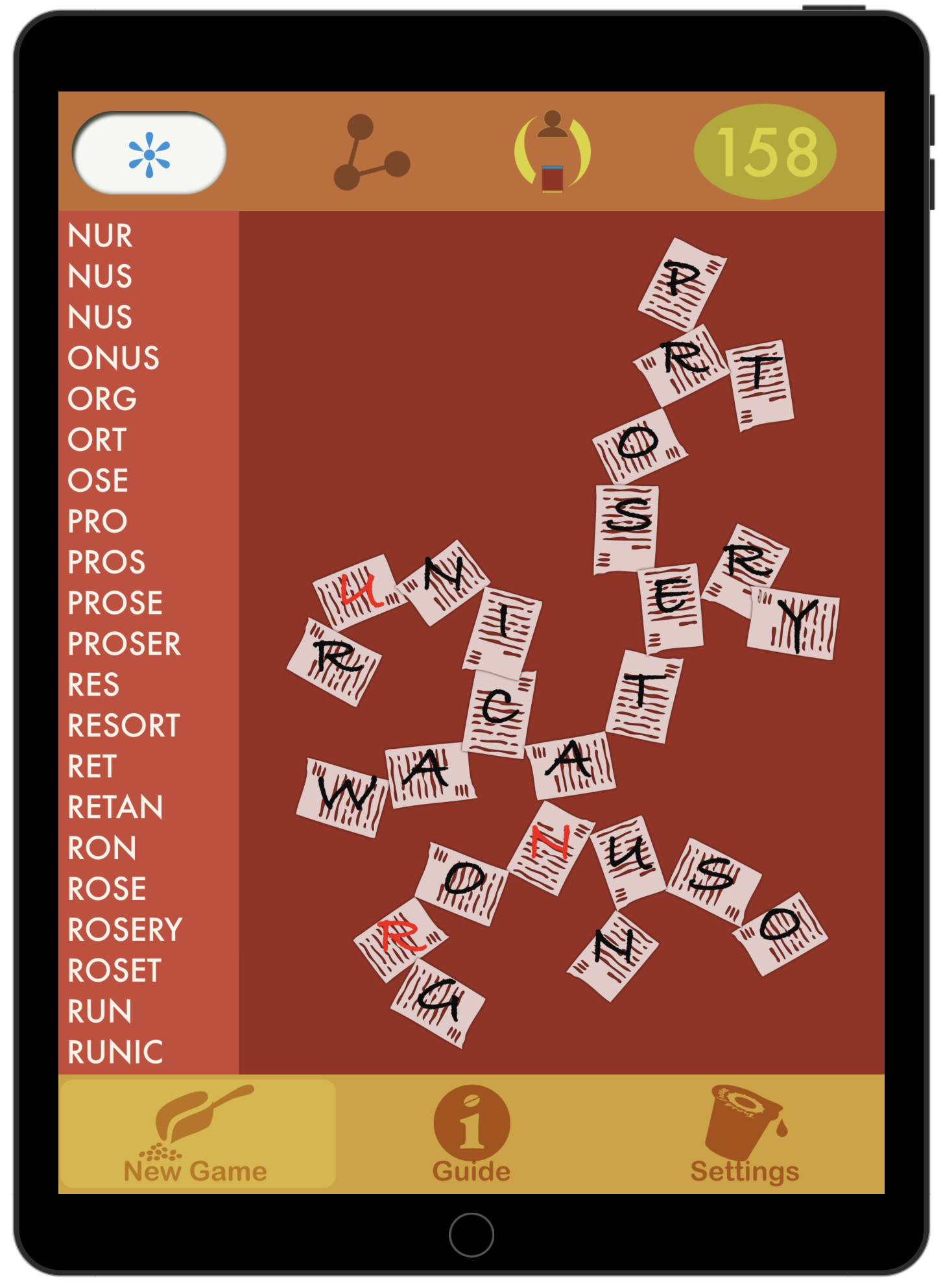
Emojication
Runicate: To communicate with runes, symbols, emoji, etc.
Gronus: An often excessive amount of strenuous physical labor: All gronus and no game makes Jack a jyt. (see below)
Trose: Something technically true but misleading.
Canuso: Wax accumulated from candles in chianti bottles on candle-light dinner tables.
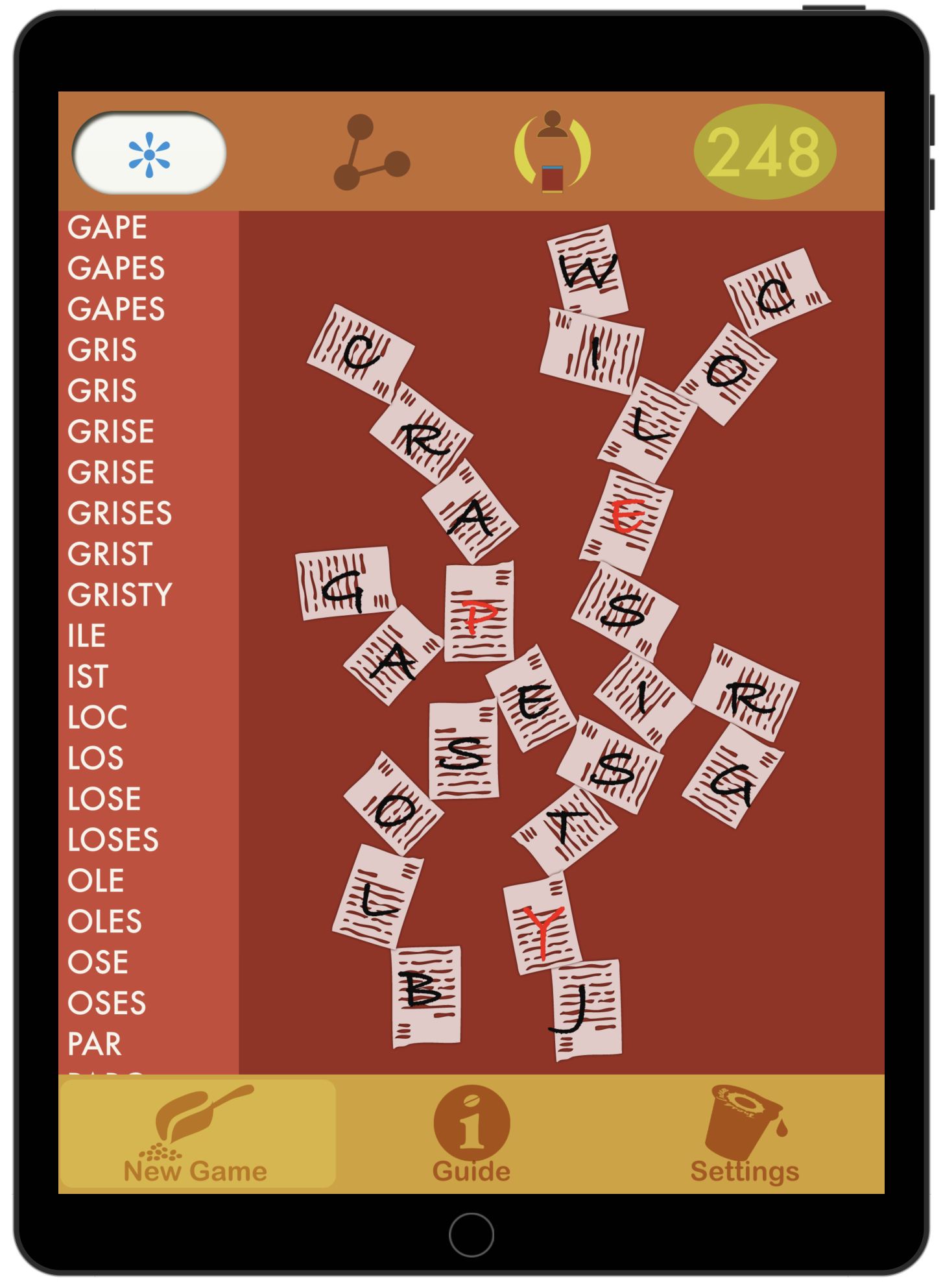
Don’t be that jyt
Blose: Bluster; Saber-rattling; Posturing.
Crapesty: A fiasco; A needless imbroglio.
Wiloc: A range covered by cowhands or herders.
Jyt: A fool; A jerk; a git.
(Honorable mention) Pag: This already exists as the acronym PAG, meaning periaqueductal gray. Scientists (by tickling) have recently identified this part of the brain that’s especially active during play. Play is recognized as important for mental and physical health and creativity. And just like that, periaqueductal will make its way into the wordlist for version 1.6.0, coming soon.
The real thing comes along
Finally, an update on the previous post. It was bound to happen. No sooner did we proudly introduce you to the jigolet than we crossed paths with the Jelly Wobbler. Truly inspired, dutifully executed, and now celebrating its 30th bobbly birthday. Maybe plunk some birthday candles in it, set to some polka music, with a fire extinguisher on hand? Check out more of Nik Ramage’s quirky inventions made in the spirit of The Secret Life of Machines’ Tim Hunkin. They’re kind of the opposite of a QR code – inefficient, lugubrious, and utterly useless. But oh, so glorious, and like facetious faux-cabulary and word games in general, probably good for your jelly wobbly pag.
No Comments